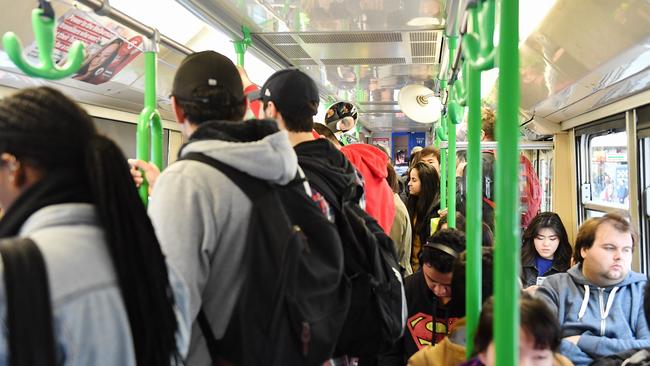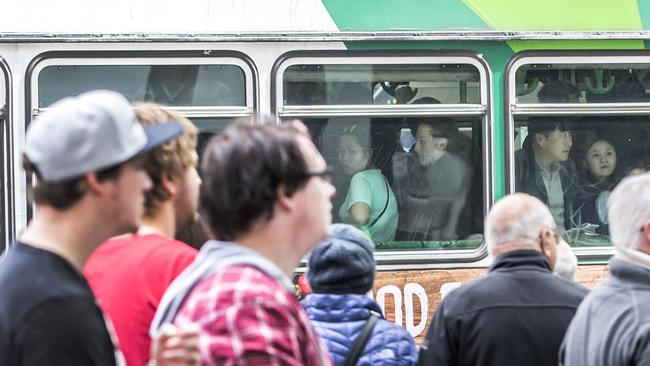Melbourne trams at risk of breaking down due to heat this summer
PUBLIC transport services may be at risk of grinding to a halt this summer, after peak-hour commuters were delayed by Melbourne trams breaking down in the heat this week.

VIC News
Don't miss out on the headlines from VIC News. Followed categories will be added to My News.
PUBLIC transport services may be at risk of grinding to a halt this summer, after peak-hour commuters were delayed by Melbourne trams breaking down in the heat this week.
Frustrated passengers reported disruptions as long as two hours on Tuesday after a number of trams on multiple routes stopped working after 5pm in temperatures of 34C.
24-HOUR WEEKEND TRANSPORT HERE TO STAY
WHY YOU ARE SQUEEZING ON TO TRAMS AND TRAINS
Yarra Trams publicly urged commuters to consider alternative travel options as employees worked to repair mechanical faults caused by the heat.
The peak-hour disruptions have fuelled concerns a heatwave could disrupt the entire network, with the temperature likely to hit 40C at least once this summer.

Public Transport Users Association spokesman Daniel Bowen said it was rare to see trams breaking down in high temperatures.
“The heat does cause issues for the network but widespread disruptions on the tram network is something we may not have seen before,” he said.
“The obvious question is, what will happen if we have some of the heatwaves that have been known to happen in the hotter months?
“The mid range of 30C is warm but Melbourne will get hotter. Yarra Trams are going to need to get on top of this.”
According to Sky News’ annual severe weather outlook, Melbourne is forecast to experience at least one major heatwave before April and above-average temperatures are predicted.
Mr Bowen said angry passengers had also reported delays on bus services affected by warm weather.
A Yarra Trams spokesperson said: “Nothing is more important than the safety of our passengers, employees and the community, particularly during periods of extreme weather.
“Yarra Trams closely monitors the network for signs of heat-related issues and works to ensure the maximum service levels are maintained, while ensuring the safe operation of the network for all passengers and employees.”


